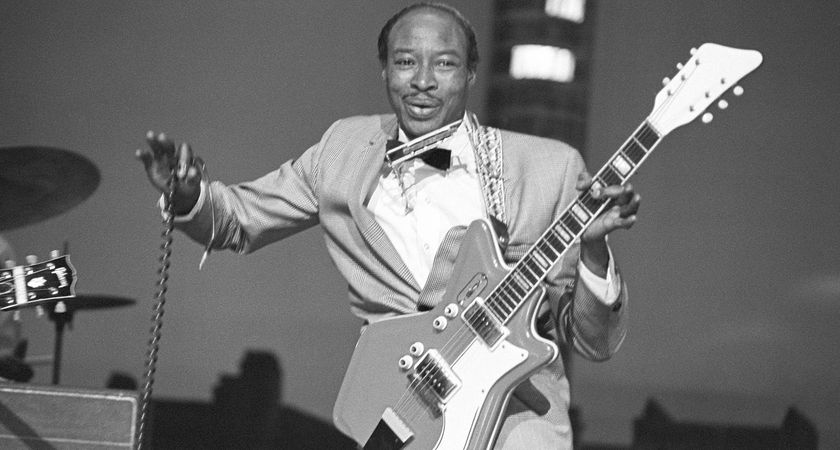How to traverse the entire fretboard using major pentatonic and hexatonic scales
Unlock the fretboard by applying E major pentatonic and E major hexatonic scales to a repeating chord progression
Last time, we surveyed the E major pentatonic and E major hexatonic scales across every available fretboard position and looked at strategies for utilizing these scales effectively in building an improvised solo. This month, we’ll apply these two scales to a repeating chord progression.
I had the pleasure of playing guitar with the great Dickey Betts of the Allman Brothers Band for 12 years, and we would play his classic song Blue Sky at every show.
Dickey is a huge fan of Jerry Garcia of the Grateful Dead, and we would always begin Blue Sky, played in the key of G, with a little jam reminiscent of the Dead tune Franklin’s Tower, with the chords G, F and C (the I, bVII and IV, respectively) played in a repeating loop for some extended soloing.
FIGURE 1 presents a similar progression in the key of E, utilizing the chords E, D and A. In bar 1, we move from the tonic, E, to the bVII, D. In bar 2, the progression moves to the IV chord, A, with a brief accent on D/A falling on the last 16th note of beat 2.

These two bars repeat, and in bars 3 and 4 I switch to voicings of the same chords played higher up the fretboard in order to attain a varied and brighter sound.
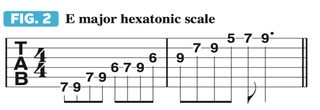
Let’s briefly review two essential scale positions for E major hexatonic. In FIGURE 2, the scale is played across all six strings, mostly in 6th position, and in FIGURE 3 the high A note moves over to the B string, five frets higher, which allows for a convenient extended ascent up to the octave high E.
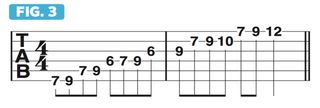
An invaluable way to really get to know any scale and learn how to make the most of it is to practice playing it up and down a single string. In FIGURE 4 we descend through E major hexatonic on the high E string, and in FIGURES 5-9 we’re doing the same thing on each of the lower strings. Be sure to memorize all of these single-string shapes and the note names too.





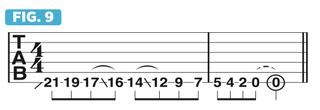
FIGURE 10 offers an eight-bar improvised solo played over this repeating E - D - A progression and performed entirely on the high E string. This type of limiting exercise forces you to play with an ear for melody, as opposed to just relying on the muscle memory of learned licks and patterns.
Also, playing on a single string requires big positional jumps, in order to play melodic lines that are usually sounded across a set of strings in a given position, and it fosters the use of expressive finger slides, as well as legato (smooth) phrasing.
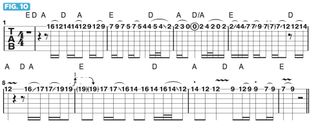
It also gives you a consistent string timbre. You could try improvising your own melodies on each individual string while staying within a particular scale.
Next month, we’ll apply a similar approach with pairs of adjacent strings.
Get The Pick Newsletter
All the latest guitar news, interviews, lessons, reviews, deals and more, direct to your inbox!
Guitar World Associate Editor Andy Aledort is recognized worldwide for his vast contributions to guitar instruction, via his many best-selling instructional DVDs, transcription books and online lessons. Andy is a regular contributor to Guitar World and Truefire, and has toured with Dickey Betts of the Allman Brothers, as well as participating in several Jimi Hendrix Tribute Tours.

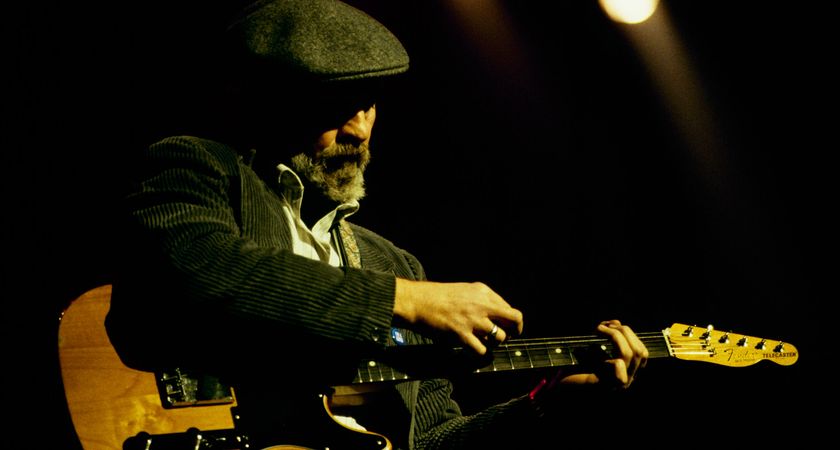


![Joe Bonamassa [left] wears a deep blue suit and polka-dotted shirt and plays his green refin Strat; the late Irish blues legend Rory Gallagher [right] screams and inflicts some punishment on his heavily worn number one Stratocaster.](https://cdn.mos.cms.futurecdn.net/cw28h7UBcTVfTLs7p7eiLe-840-80.jpg)






